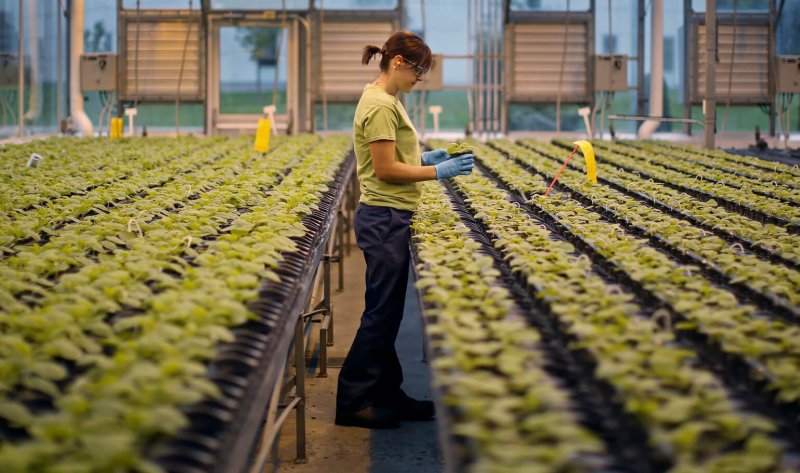Currently there is no vaccine ready for any coronavirus. SARS and MERS, caused by different coronavirus strains, were controlled with isolation and quarantine, while the early efforts to develop vaccines came to a halt (due to lack of active cases and interest in a contained disease). These initial approaches can probably be repurposed to combat SARS-CoV-2 – the virus causing COVID-19 – but the time gain isn’t significant.
SARS-CoV-2 is totally foreign to the human immune system, according to evidence published in a recent preprint. Given that, it is difficult to predict which parts of the virus will cause an immune response, the exact dosage needed, and how long the vaccine effect will last. To make things worse, coronaviruses are RNA viruses (storing their genetic information in the form of RNA), which typically mutate more frequently than the DNA viruses. Every infection gives the virus trillions of chances to change their genetic information, and the large infection numbers (more than 200,000 worldwide, speculated to be more) certainly don’t help.
A successful vaccine needs to be foremost safe and efficient. It needs to prevent viral infection and not cause side effects, especially since a large number of the population – maybe everyone? – will need it. The vaccine needs to become available in huge quantities within a short time frame. And the production process needs to be flexible enough to cover new mutated virus strains as they get identified.
New technologies to the rescue
Typical vaccines are made out of deactivated virus particles, dead viruses, or virus pieces, which are injected and cause immune response. The immune system produces antibodies to defend, and retains a memory of the virus to keep the organism safe from future infection. This method is unfortunately not ideal to vaccinate against COVID-19 for the reasons explained above (lack of specific knowledge, urgency, mutations). As a result, the scientific community may need to focus on new vaccine creation approaches.
Companies such as Moderna Inc, which has started human clinical trials on a vaccine, and the German CureVac have high hopes for the use of messenger RNA (mRNA) as a vaccine. Messenger RNA is the molecule that connects the genetic information stored in DNA with the cell’s protein-building machinery. The idea behind this technology is that human cells injected with a specific mRNA will be stimulated to produce antibodies against the new coronavirus.
Antibodies can be used both for vaccination and treatment. The pharmaceutical company Regeneron is currently testing an approach that was used before as an Ebola virus treatment. The company is using transgenic mice that have similar-to-human immune systems and exposes them to SARS-CoV-2 parts. The mice produce different kinds of antibodies, and the researchers isolate them and characterize their therapeutic potential. The effective antibodies can be administered to Covid-19 patients for treatment or to healthy individuals with high risk (e.g. medical personnel) to prevent them from falling sick.
Tobacco, an unlikely vaccine production host
Agrobacterium tumefaciens is a soil bacterium with a unique ability: It can infect plants by injecting a plasmid (circular DNA molecule) and cause them to develop tumors. This infection mode makes it an important pathogen and a significant hazard for agriculture. But in the late 70s researchers managed to deactivate the tumor causing genes, making the plasmid an easy way to introduce foreign genetic material into plants.
Agrobacterium suddenly became the workhorse of plant biotechnology, and researchers over the years became more creative in using it in different plats species for research and agricultural applications. One such technique is transient infiltration: Instead of permanently altering the genome of a plant embryo, researchers use the bacterium to infect the leaves of a more grown plant. The foreign DNA will stay active for a few days before it slowly disappears, being active for a limited amount of time. This technique is called agroinfiltration.
When agroinfiltration is used in tobacco leaves, the plant produces massive amounts of a foreign (e.g. human) protein within a few days. If this protein is an antibody, or a virus part, they can be used for vaccination or treatment. This idea is explored by the Canadian biotech company Medicago to produce treatments for disease such as Ebola and flu.
Medicago is aiming to use its tobacco platform for a COVID-19 vaccine. The company aims to use agroinfiltration to produce virus-like particles. Virus-like particles are protein structures identical to the coronavirus on the outside, but will be totally empty inside. These ghost cells of a virus can then train the body’s immune cells to detect and combat the actual virus. The advantage of this combination is its flexibility: if it proves effective, it is easy to introduce alterations to cover mutated strains without changing anything in the production process or efficacy. The company is testing an experimental vaccine in preclinical settings, and hopes to start human trials soon.
The COVID-19 news is mostly bleak, but promising updates from the biotech world bring some hope and a treatment and a vaccine may be in market quickly. But “quickly” means several months at best. It is important to avoid cutting corners and properly test the safety of new products. There are many different approaches, and I hope more than one proves effective. It is fascinating to see how researchers in universities and companies repurpose technologies developed for completely unrelated reasons (such as agroinfiltration, whose main use for many years was to silence plant genes for genetic studies) to contribute to a healthcare emergency.
The open global collaboration, whether for treatment development, sharing of clinical data, or even coordinating infection control measures is crucial to save lives. The weight of responsibility falls on policymakers, but personal responsibility is maybe as crucial. The next few months are going to be hard, and everyone needs to do their part!
Kostas Vavitsas, PhD, is a Senior Research Associate at the University of Athens, Greece. He is also a steering committee member of EUSynBioS. Follow him on Twitter @konvavitsas































